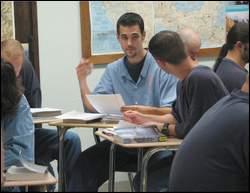 after years of fits and starts, prisoner reentry programs are now blooming like tulips in springtime. i’m regularly getting calls and emails such as the one i’ve anonymized below, but i rarely have good advice to offer.
after years of fits and starts, prisoner reentry programs are now blooming like tulips in springtime. i’m regularly getting calls and emails such as the one i’ve anonymized below, but i rarely have good advice to offer.
My name is ___, and we are presently in contact with the director of Chaplain Services for [name] Penitentiary about starting a program to assist ex-offenders realize the potential that is within them and help them to develop that potential. This is something that is new to me, so I am not very knowledgeable about this matter, but my passion to assist in this matter will enable me to be able to help some. Then I want to talk with local Pastors to get more involved as well.
The reason that I am contacting you is because of the write up that you did with Mr. Manza on “The President Is Right: Ex-Felons Need Aid.” I was hoping that you could give me some insight that I may use to help in the re-entry of our fellow brothers and sisters in this to be successful in their efforts to re-enter society… If you have anything that you feel that will help us to be more effective, we will truly appreciate any kind of assistance you may be able to provide.
Thank you very much …
1. the department of Justice now offers a helpful reentry site with a clickable map to access state and local resources.
5. the urban institute’s Justice impressive reentry research and roundtable discussions.
perhaps others might offer additional sites or ideas for starting reentry projects.








 a new report on reducing america’s prison population came out this week, co-authored by some of my favorite criminologists: james austin, todd clear, troy duster, david greenberg, john irwin, candace mccoy, alan mobley, barbara owen, and joshua page.
a new report on reducing america’s prison population came out this week, co-authored by some of my favorite criminologists: james austin, todd clear, troy duster, david greenberg, john irwin, candace mccoy, alan mobley, barbara owen, and joshua page.